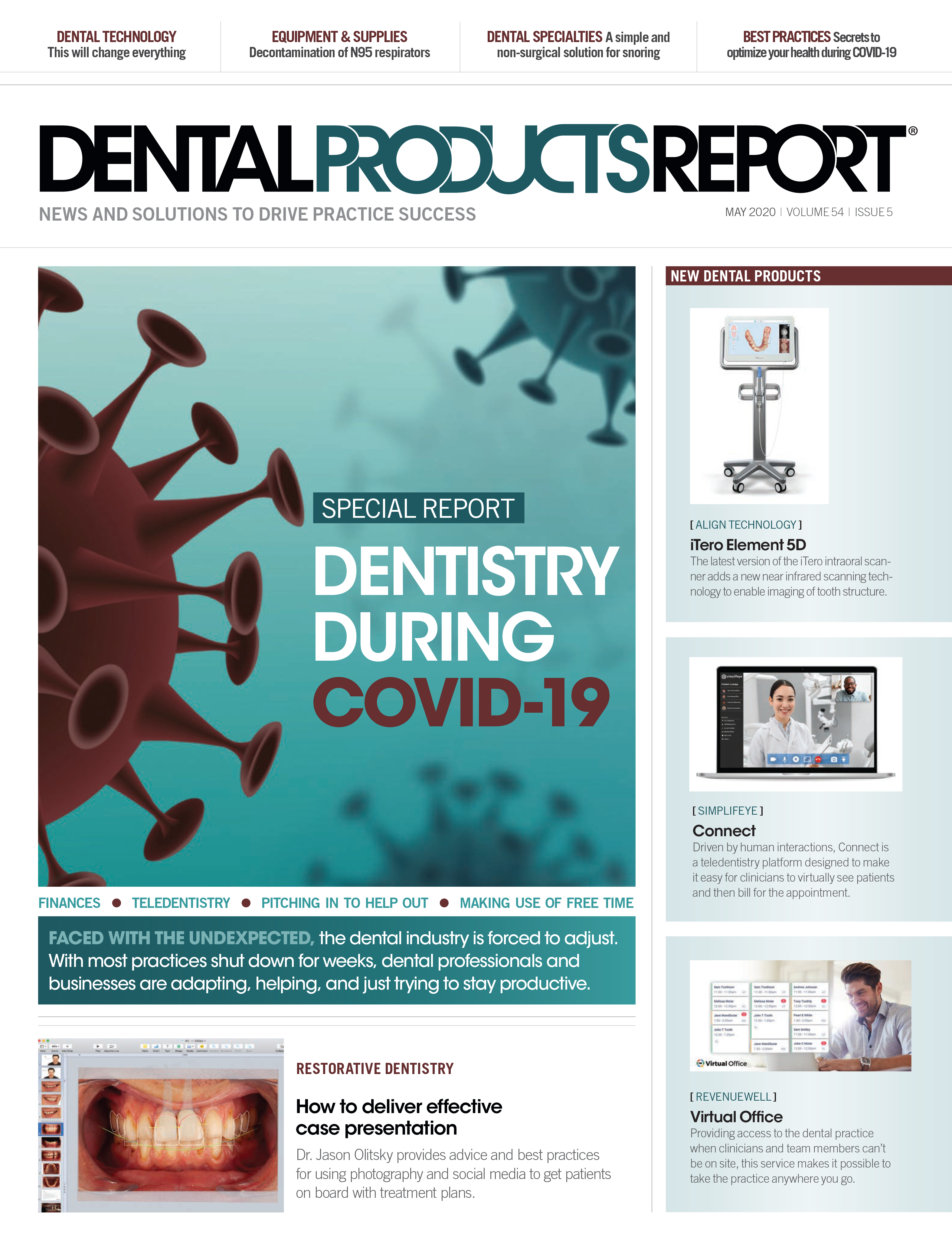Dentistry Tomorrow: Let the cloud seamlessly integrate your technologies
Curve Dental’s Jana Macon explains how cloud-based practice management software should be at the center of your dental technology integration.

Dentistry’s tech boom created exciting new opportunities for diagnosis, treatment planning, and delivery of care. Technology also allows dentists to run their businesses far more comprehensively than the old days of physical charts and appointment calendars. Yet all of these benefits come with some frustrations, especially when related technologies don’t seamlessly integrate with one another.
No doubt you are aware of Curve Dental as a market leader in cloud-based practice management software since they were founded in 2005. They were recently acquired by Battery Ventures, who brought in a new leadership team and is committed to investing over $40 million dollars into its platform over the next five years.
I sat down with Jana Macon, Curve Dental’s EVP of Customer Success, to discuss how practice management software should be at the center of technology integration.
LS: Curve has been making major advancements since your team came on board. What’s your vision for what I’m calling “Curve 2.0?”
JM: Our whole team is very engaged and passionate about joining the dental community which has this rare intersection where the care provider is also the proprietor of the business.
Prior to our coming to Curve, our core leadership team had almost 15 years of experience working together, partnering with caregivers in the medical community who are also business people. We’ve learned how to give them tools and a platform to help them not only deliver excellent patient care, but also to grow their business and become more efficient and more profitable.
In my mind, our biggest vision is to provide dentists with a single platform that really allows them to run their entire business. They shouldn’t have to be IT experts and their practice management software should just work. It shouldn’t be down for updates and it should seamlessly integrate with third party software.
LS: One of the most unique features of Curve when it debuted in the mid-2000’s was that it was cloud-based. It turns out your company was ahead of the curve, if you’ll excuse the pun. Now that other companies are offering cloud-based options, what questions should dentists be asking to ensure that a software is truly cloud-based and not an imitation?
JM: Not all cloud options are the same. Not all software that claims to be cloud really is. So you need to look for a few things.
First, can you access the software directly from a browser without any downloads or needing to log in to a server, then connect remotely to your software? A browser-only environment tells you that all of the computing, security, data storage, and backups are happening in the cloud.
During this pandemic, Curve users have had easy access to their system to reschedule patients and handle billing. Photo: Curve Dental.

Second, if you must own a server, it is NOT cloud software. A cloud-based solution stores everything in the cloud, in a data center; not in a closet or server room or in the software vendor’s offices.
Third, make sure there is always a mechanism to extract your data easily. After all, it’s yours! At Curve, we have a button every customer can click anytime, called “Get My Data.”
Fourth, and most important, cloud-based software is also known as SaaS-Software as a Service. There must be world-class service wrapped around the software. Customer care, automatic product upgrades, data security and backups, training, and more round out the cloud experience. It’s almost like we are cheating because cloud really facilitates this type of experience. Call us with a problem, we’ll answer within a minute and get it resolved in less than eight. Any cloud-based solution that is not providing this level of service is not using your monthly subscription responsibly.
LS: I can access my software from home. Why is that any different than the cloud?
JM: Some people say: “My software is hosted, I can access it from home.” Well, you can if your IT company installed a VPN connection for you, but there is still a server somewhere that has to be paid for and maintained. So having remote login and access is not the same thing as having your data in the cloud.
True cloud server facilities are more complex; they’re a world class virtual infrastructure built on a series of servers, with layers of security and intrusion detection wrapped around them. And not only is the data more secure, it’s more accessible. You just need a computer with a web browser and you’re in business.
If you have to install software, go through a VPN, or log into anything other than your own web browser, then that’s a red flag that you are not actually in the cloud. In a “hosted” non-cloud setup, you likely will still have panic calls to the IT guy on Monday morning, and you still may have downtime for system updates. True cloud with Curve means you’re essentially pooling your resources with over 27,000 other users to utilize a solution that any practice alone simply could not afford.
LS: I think the COVID-19 pandemic has helped dentists re-evaluate their operations and their technological capabilities. What are some ways that Curve dentists have benefited from a cloud-based platform during the mandatory shutdown?
JM: Curve users have had easy access to their system to reschedule patients and handle billing. When they’ve received an emergency call they’ve been able to look up patient records and properly triage. Their teams can also remotely and safely access the system for training purposes or to catch up on some work. All of this is done seamlessly as if they were still working from the office. Their user experience is exactly the same.
LS: Integration with third-party software has become an increasingly important feature of practice management software. I’m curious to hear your thoughts about open systems and compatibility.
JM: Something that is part of Curve’s DNA as a group is that we wholeheartedly believe that dentists should have all of the functionality they need in one place to run their office. But that functionality is evolving. It used to just be things like patient charting and imaging, but now dentists see the value of patient engagement and business intelligence.
We’re constantly adding features like these to the Curve platform, but we also realize that if a dentist really loves an existing solution that they’ve had for several years, then they should be able to use that with Curve, too.
From a technical standpoint, we offer simple integration for third-party software because our cloud-based system offers a strong API to connect with other technologies. What that boils down to is that it’s relatively easy for other software to integrate with Curve. This is the advantage of a mature cloud platform with a rich ecosystem of integration partners.
Connecting with other dental solutions is just part of what we call “interoperability.” Moving forward, there is a bigger picture, wherein dentists become part of the continuum of care along with hospitals, physicians, and other medical providers. Interoperability provides a true, uninterrupted flow of health information for the patient data, which will become increasingly important as the connection between oral health and overall wellness becomes more tightly aligned.
A true cloud-based, open architecture like Curve is going to be able to quickly and seamlessly evolve as the dental market evolves. This is very different from having to wait for slow and clunky updates.
I think the future for dentistry is bright despite the challenges private practices are facing. Technology is helping dentists automate payment processing, secure patient financing, fill open chair time, provide levels of care via teledentistry…the list goes on. Practice management software is the hub for these activities and it should help them be realized, not hinder them.
While our platform is already very robust and easy to work with, we plan to invest another $40 million over the next five years to keep it that way. After 15 years in the business, we remain committed and hungry to continually revolutionize the ways that dentists leverage technology to better serve patients, improve operations, and increase profitability.
ABOUT JANA MACON
Jana Macon is Executive Vice President of Customer Success at Curve Dental, where she leads a group that focuses on exceeding customer expectations in the areas of implementation, data conversion, training, support, and other operational areas. Jana has over 25 years of executive experience with organizations focused on SaaS solutions for medical applications. Prior to joining Curve, she was part of the leadership team at Brightree, where she helped to create industry-wide adoption of cloud computing in the post-acute care provider community.

Product Bites – January 19, 2024
January 19th 2024Product Bites makes sure you don't miss the next innovation for your practice. This week's Product Bites podcast features new launches from Adravision, Formlabs, Owandy Radiology, Henry Schein Orthodontics, Dental Creations, and Dental Blue Box. [5 Minutes]